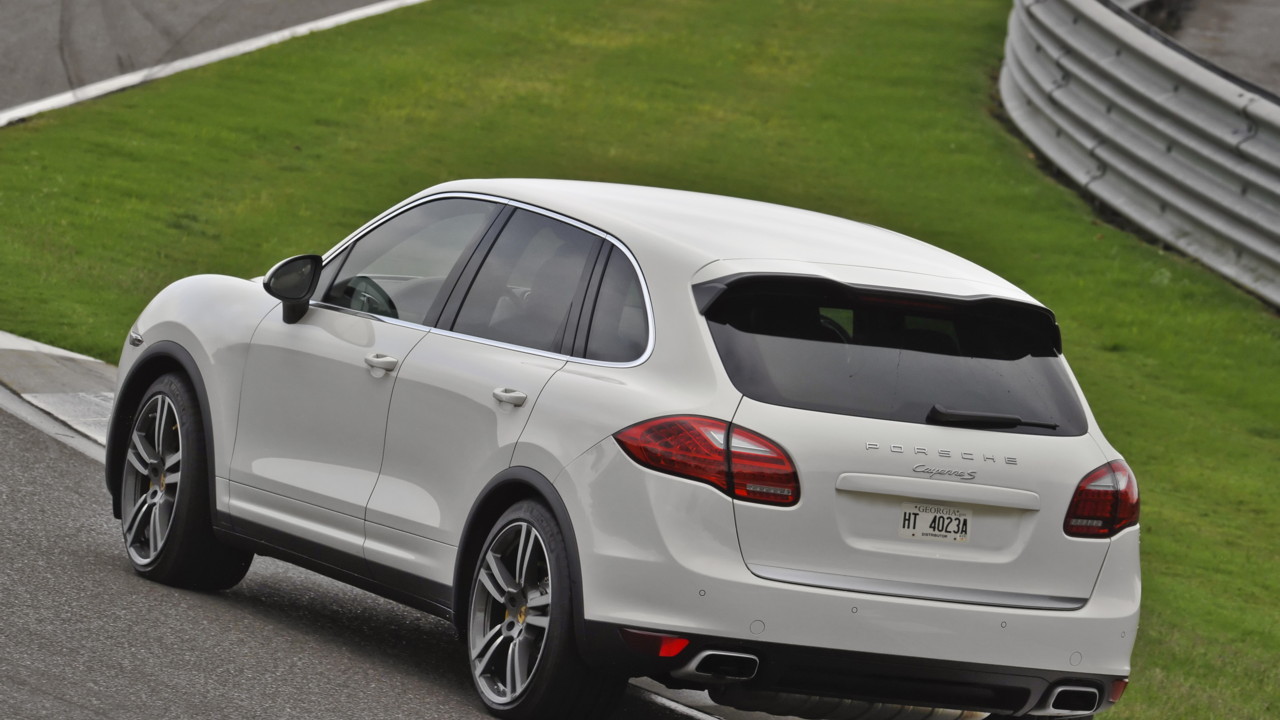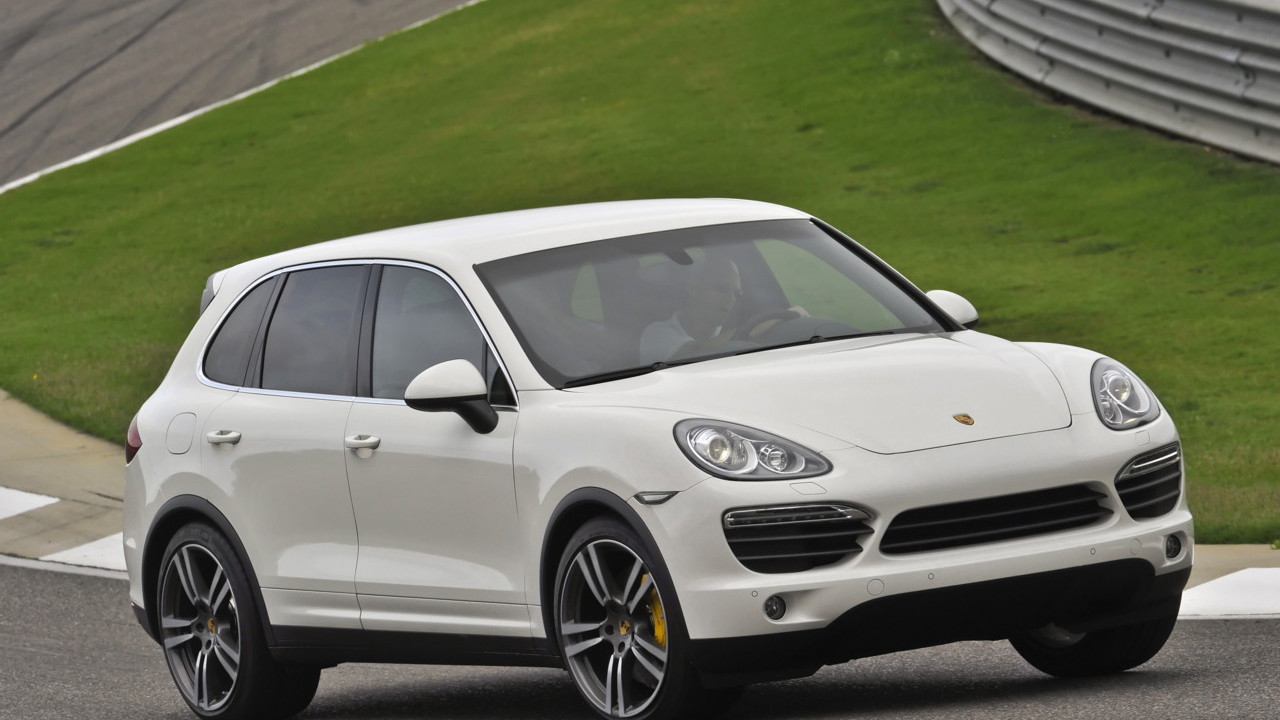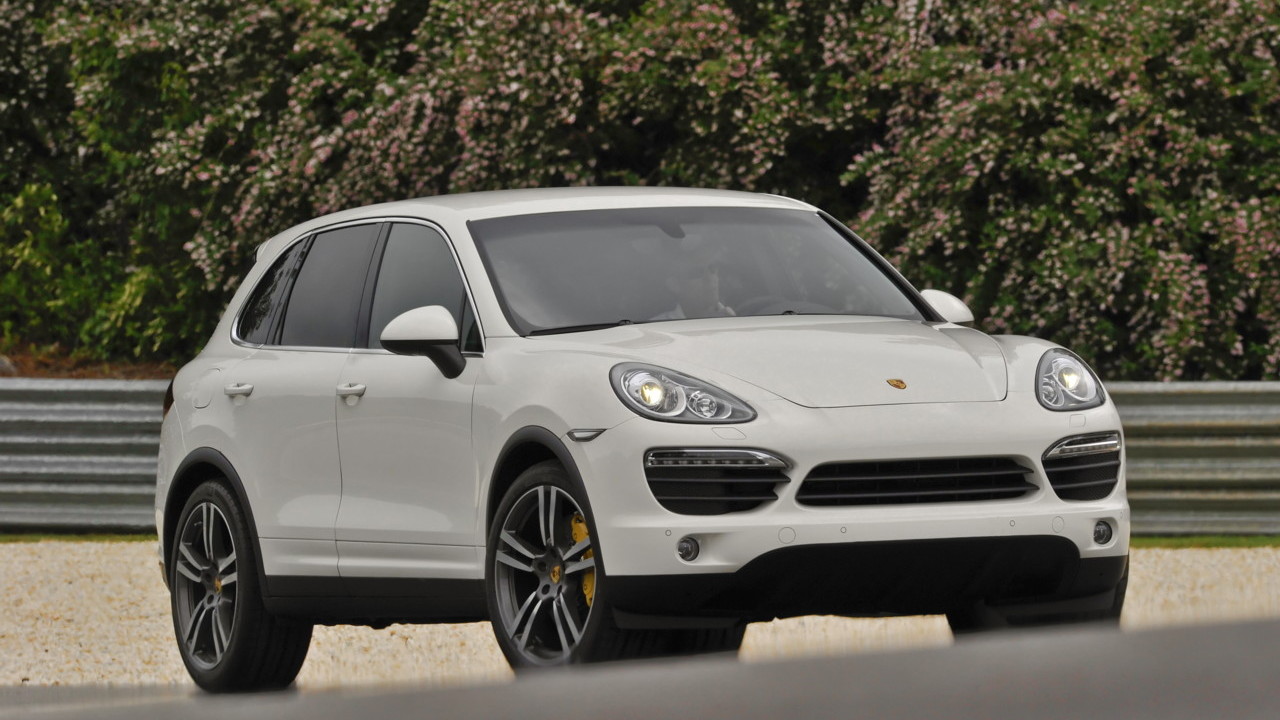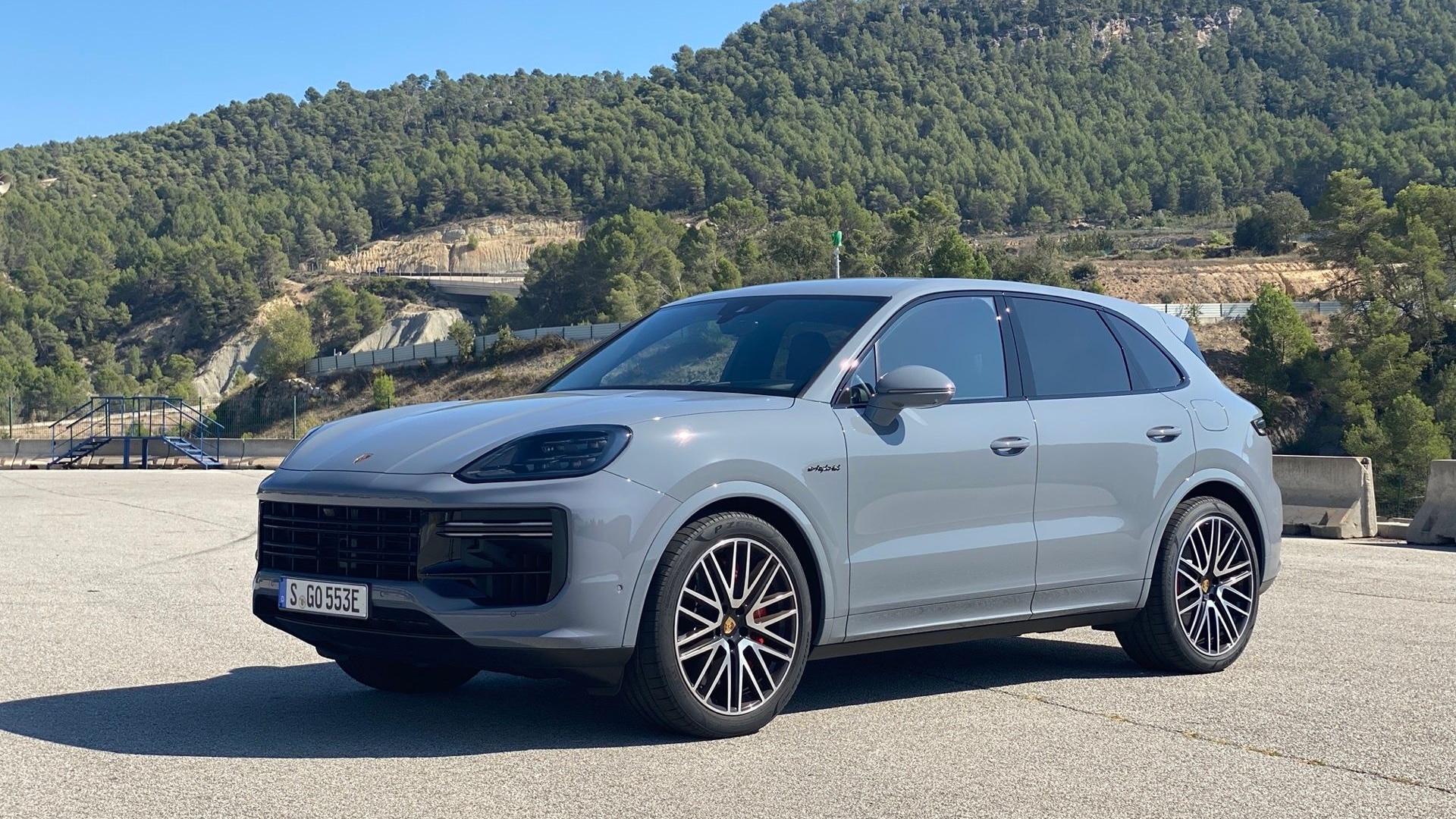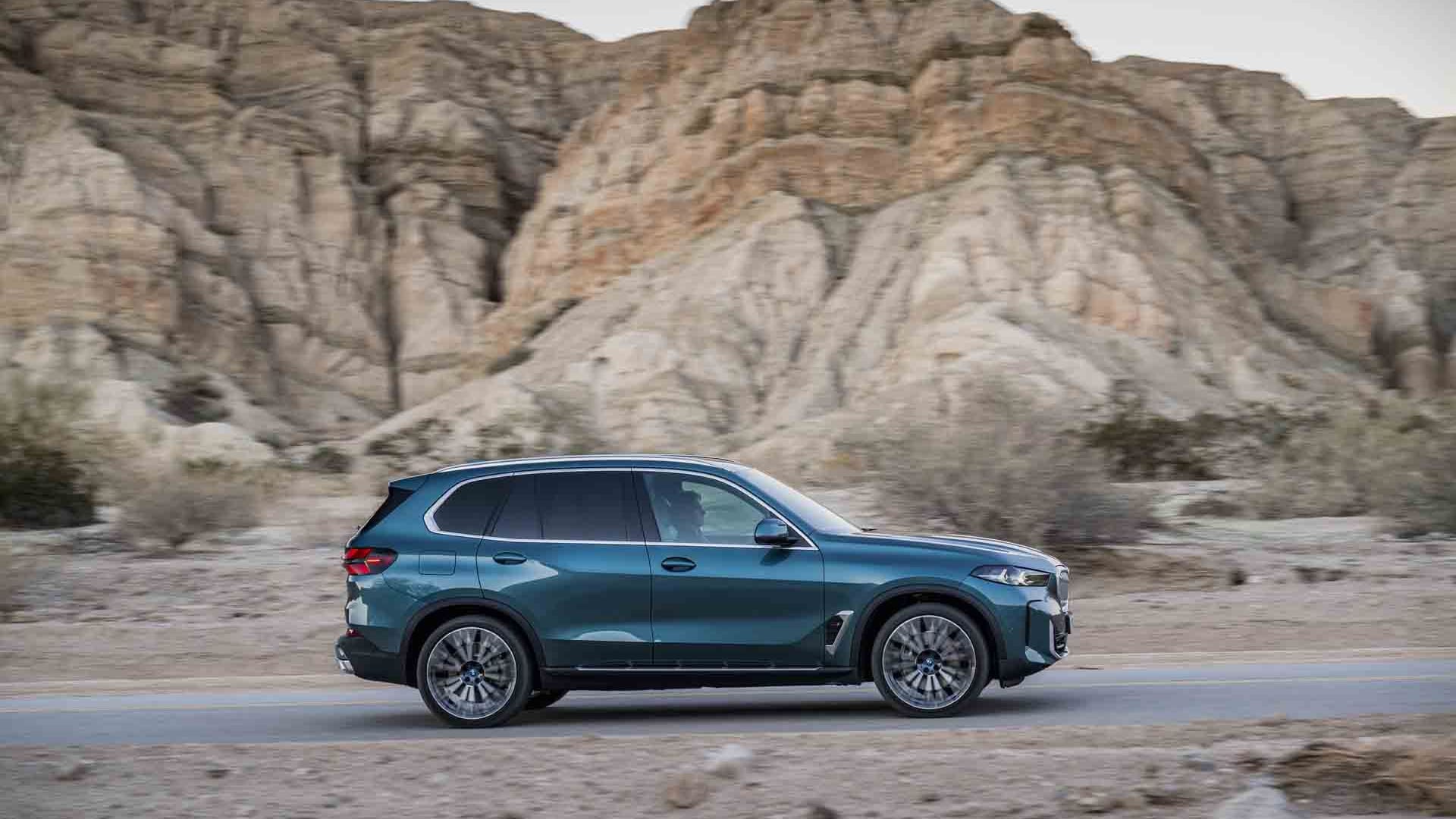Part of the reason behind this surefootedness and poise is that there's significantly less weight to be shifted around, and a number of performance improvements make the Cayenne more focused toward on-road dynamics without sacrificing its off-road capability.
All the Cayenne's new-for-2011 features would have weighed an extra 154 pounds had the existing version been carried over, the automaker says. But here's where the story gets particularly interesting. Altogether, the 2011 Cayenne S weighs about 400 pounds less than the 2010—through no single strategy, but a combination of going with an active, electronically controlled all-wheel drive system and forgoing a low range; using more aluminum, substituting lighter interior components; swapping wheels and tires; and installing an electric parking brake, among many changes. The base Cayenne V6 model, which will reach dealerships later in the year, will now weigh in at a more size-appropriate 4,400 pounds.
Even the new 2011 Cayenne S Hybrid, which we also drove on the track, weighs in at slightly less than the 2010 Porsche Cayenne S; and that's considering its full-hybrid powertrain, including 47-hp electric motor system and 333-hp supercharged V-6 engine. The Hybrid will reach dealerships in October, a few months after the V-8 models.
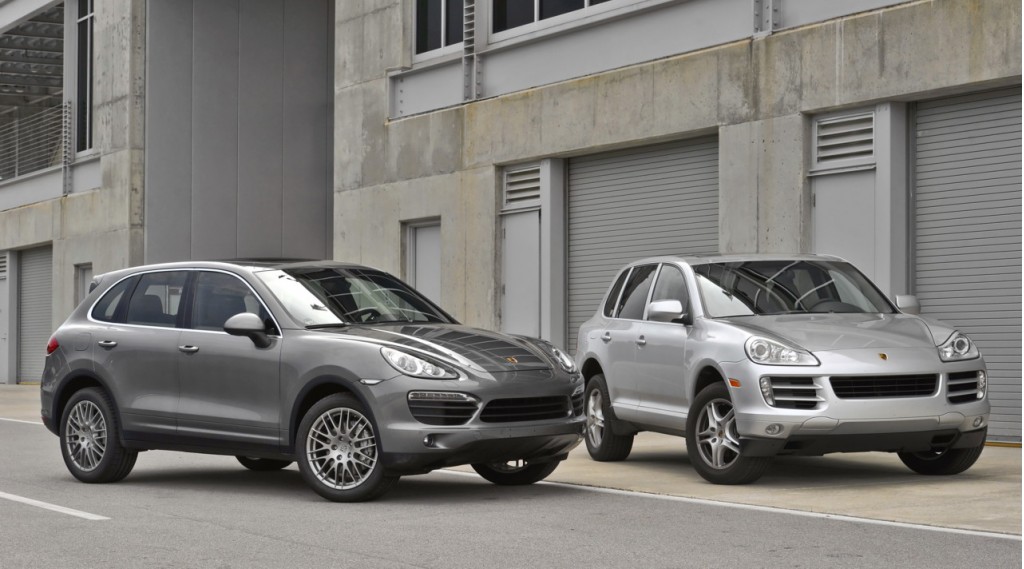
2011 Porsche Cayenne (left) and 2010 Porsche Cayenne S (right)
Spicier interior completely changes the feel

2011 Porsche Cayenne Turbo
In back, the Cayenne's rear bench seat now slides fore and aft a total of 6.3 inches, and legroom has increased thanks to a 1.6-inch longer wheelbase. Back seat rake is also adjustable, with three different positions. The seatback still doesn't fold completely flat, though it will provide space for a snowboard or a small piece of furniture.
Higher top speeds, better fuel-efficiency
The new Cayenne S once again comes with a 4.8-liter V-8, now making 400 versus 385 in last year's model; the Cayenne Turbo gets a twin-turbocharged 4.8-liter that makes 500 hp. Top speeds are up to 172 mph for the Turbo, 160 mph for the S, and 150 mph for the S Hybrid.
Both V-8s have much-improved fuel-efficiency, with the Turbo 23 percent more fuel-efficient than the outgoing model. That's in part thanks to an all-new eight-speed Tiptronic S transmission—offered on all 2011 Cayenne models—that spans a very wide set of ratios. Better thermal management, a smart alternator system, a variable deceleration fuel cut-off, and the weight savings all also play a role.
So does Auto Start-Stop, a feature that will automatically turn the engine off at a stoplight and restart it when you lift off the brake. While the Euro-spec versions that we drove default to turning the system on, U.S.-spec Cayennes will likely default to turning start-stop off.
Of the two V-8s, both are sweet and responsive, but we most enjoyed the Turbo, which has the most personality of any in the lineup, with a raucous, pulsing exhaust note and mammoth, instantly accessible torque available from low revs, lending a relaxed, almost effortless feel to on-the-road driving. In the Turbo, a stomp down at 70 mph commanded a downshift from 8th to 3rd gear and a mad rush to, in just a few seconds, triple-digit mph.
All that extra power could get you into trouble as well, but a set of electronics makes sure it's all in check. Porsche's stability control system (PSM) now includes a Porsche Torque Vectoring (PTVF Plus) feature that helps redirect power application to the wheels that will result in best stability, either during high-performance driving or in slippery conditions. These features work together with the PASM air suspension system when so equipped; we found them to give the Cayenne a surprising level of composure over a sudden crest in the Barber course, the wheels only momentarily jockeying for the best traction. The Cayenne has a level of poise that outshines the BMW X5 M or Infiniti FX50 at fast track speeds.

2011 Porsche Cayenne S
Although few Cayenne owners will likely ever take their luxury ute off-road, Porsche still feels the need to offer trail ability in its ute. That considered, it's amazing that the 2011 Cayenne can trundle through sand and mud one hour, then after a quick cleanup—no change of tires even—head right out for hot laps. No other SUV can do that with the same athleticism, finesse, and flavor as the Cayenne.
